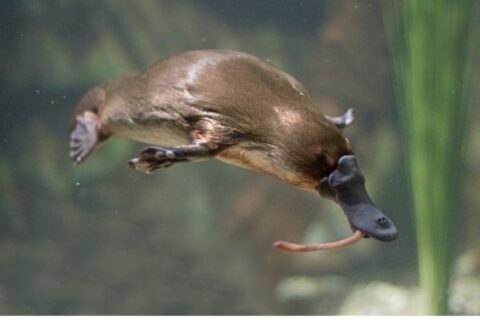

Platypus Venom (FREE): Whittington, Camilla, and Katherine Belov.

“ Platypus Envenomation – a Painful Learning Experience.” Medical Journal of Australia 11-12:157 (1992): 829-832. And don’t mess with Mother Nature, especially if she’s been drinking.Ĭase Study (FREE): Fenner, P.J. The take home message though is clear: platypus, no matter how cute and cuddly, are painfully venomous. I’d love to visit, hell even live, in Australia, but it’s got to be one of the most poisonous and venomous places on the planet – bad for my health, but good for a toxicologist’s career.

This war hero’s experience is not unique, as I’ve read several near-identical ordeals. Additionally, these non-specific ion channels cause uncontrolled flow of ions into neurons, resulting in nerve firing and the long lasting, intense pain. All together, these peptides produce new ion channels that interfere with signal transduction by crippling potassium and chloride gradients, causing edema (swelling). The venom includes defensin-like peptides, C-type natriuretic peptides, and nerve growth factors. Much like venom in snakes and other venomous creatures, platypus venom is a complex mixture of peptides – probably dozens – with no single peptide responsible for the pathophysiology of envenomation. daily.Īre these the most adorable things or what? Baby Platypus by LandLearn NSW (CC BY-NC-SA 2.0) During his harrowing adventure I bet he cried at least once. Three months later the swelling was such that he couldn’t make a fist.

Overall, the gentleman spent six days in the hospital, and was discharged with only a small fraction of movement in his hand and fingers. Two weeks after his close encounter of the platypus kind he still had tenderness to the touch and pain strong enough to wake him at night. At 48 hours he was finally able to touch his hand without severe pain. At 24 hours there was little change, but he was now complaining of chest pain, which is not surprising – he admitted with a pulse of 120 beats/min and a blood pressure of 140/100. The only thing that helped was a complete wrist block with bupivicaine (which stops action potentials from propagating in nerve cells, preventing you from feeling pain), but wore off after 12 hours. Intravenous morphine – 30 mg over an hour – was also unsuccessful, but he was kept on a 1.5 mg/hour morphine infusion anyways. When he reached the nearest emergency department, no amount of comfort care was successful – even a piece of ice on his hand caused severe pain. So I’m thinking this is one tough dude. The slightest touch or movement caused excruciating pain much worse than the shrapnel wounds he suffered during the war. One and a half hours after the envenomation the pain was described as “so bad I started to become incoherent.” Now is probably a good time to note that the gentleman was awarded the Victoria Cross, UK’s highest military decoration for valor, and experienced shrapnel wounds during a war, most likely the Vietnam War. The pain was “immediate and severe,” with the platypus difficult to remove. One on the back of the hand (dorsum), and one on the middle finger, with the spurs angled towards the fingers. Platypus don’t like to be disturbed, so it sank both spurs into his right hand. Thinking the creature might be ill or injured, he picked it up by the nape of its neck, like a cat, to move it aside. In 1991 a 57-year old male was fishing near Mackay, North Queensland, Australia, when he came across a stubborn platypus on a log. To my knowledge there are no human fatalities related to platypus envenomation, just other wildlife and hunting dogs, though an afflicted person might soon be wishing they were dead. The location of these venomous spikes is certainly odd, but they are thought to be both offensive and defensive weapons, particularly towards other males during mating season. In males, each hollow spur, with a channel opening of ~0.2 mm, is connected to a crural (venom) gland located on the side of their abdomen. Platypus Spur by Stowe Boyd (CC BY-NC 2.0)īoth sexes of platypus are born with spurs on their hind legs, though the female’s are lost during development.


 0 kommentar(er)
0 kommentar(er)
